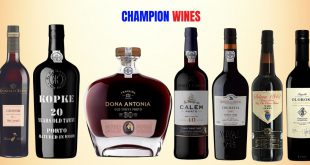
Japanese drinks giant Suntory’s Tomi No Oka winery, at its highest point, is 600 metres above sea level. Apart from producing single vineyard Koshu and red Bordeaux blends, it also has stunning views of Mount Fuji.
It is my belief that Koshu, the grape, originates from China.
Between 630 and 838, the Japanese court sent 19 official missions to Tang China (618 – 907).
That timeline co-incides with local Japanese legend that Buddhist monk Gyoki planted the first vines in 718 in Yamanashi.
The 19 missions went to China to learn about – including – measurements for goods, currency (the Yuan or Yen), the Chinese lunar calendar, geomancy, governance, administration, bureaucracy, Buddhism, painting, writing and calligraphy. Commercial goods were also part of the mix, tea being one of them. The tea that was drunk during the Tang era was green.
Traditionally, Koshu was trained on pergolas.

Pergolas not only help keep the fruit high and dry, they also encourage viral yield of many bunches of Koshu. Flavour formation can be a challenge. Yamanashi is synonymous with the variety, Koshu being the old name of the prefecture.
Japan experiences monsoons in June and early July (during the flowering) and typhoons in September leading up to harvest.
This chosen method of cultivation was as much driven by necessity as it was by commercial aspirations. Japan experiences a lot of precipitation during the growing season, including monsoons in June and early July (during the flowering) and typhoons in September leading up to harvest. All that downpour and humidity would daunt most other people except for the tenacious Japanese. That said, in spite of its moniker, the sun does not always rise in the Land of the Rising Sun. Both chaptalisation and acidification are allowed under Japanese wine law although it is usually the former that is called into service for the country’s naturally low alcohol wines.
Pergolas not only help keep the fruit high and dry, they also encourage viral yield of countless bunches of grapes. Flavour formation, let alone layered, nuanced complexity is a challenge. Thin, even watery, wine can be the result.
The birthplace of Japanese viticulture is Yamanashi on the main island of Honshu. Lying about 125 kilometres west of Tokyo, the prefecture is also famous for its picture-perfect Koshu table grapes, plums, and peaches and, in the right places, shutter-stopping views of Mount Fuji. The prefecture is synonymous with the variety, Koshu being the ancient name of Yamanashi. Ninety-five percent of Koshu is grown in the prefecture.
They didn’t speak French and the laborious educational process through written translations back and forth a contact in Paris.
The first documented Japanese attempt to make grape wine took place in 1875 in Kofu, capital of Yamanashi. Tools used for sake production were employed and the results were not memorable (even today, you will find some bottles of Koshu in 720 ml, a bottle standard of sake). Two years later, a winery formed by farmers and merchants in Katsunuma, Yamanashi, dispatched two young Japanese to Bordeaux to learn about winemaking. They didn’t speak French and the laborious educational process through written translations back and forth a contact in Paris was, to say the least, far from ideal. If only the internet had been invited then.
The Iwaimura Winery folded seven years after it was founded in 1877 but the precedent for producing wine from Japanese grown grapes was established.
You may also want to read … The Four Phases of Koshu

